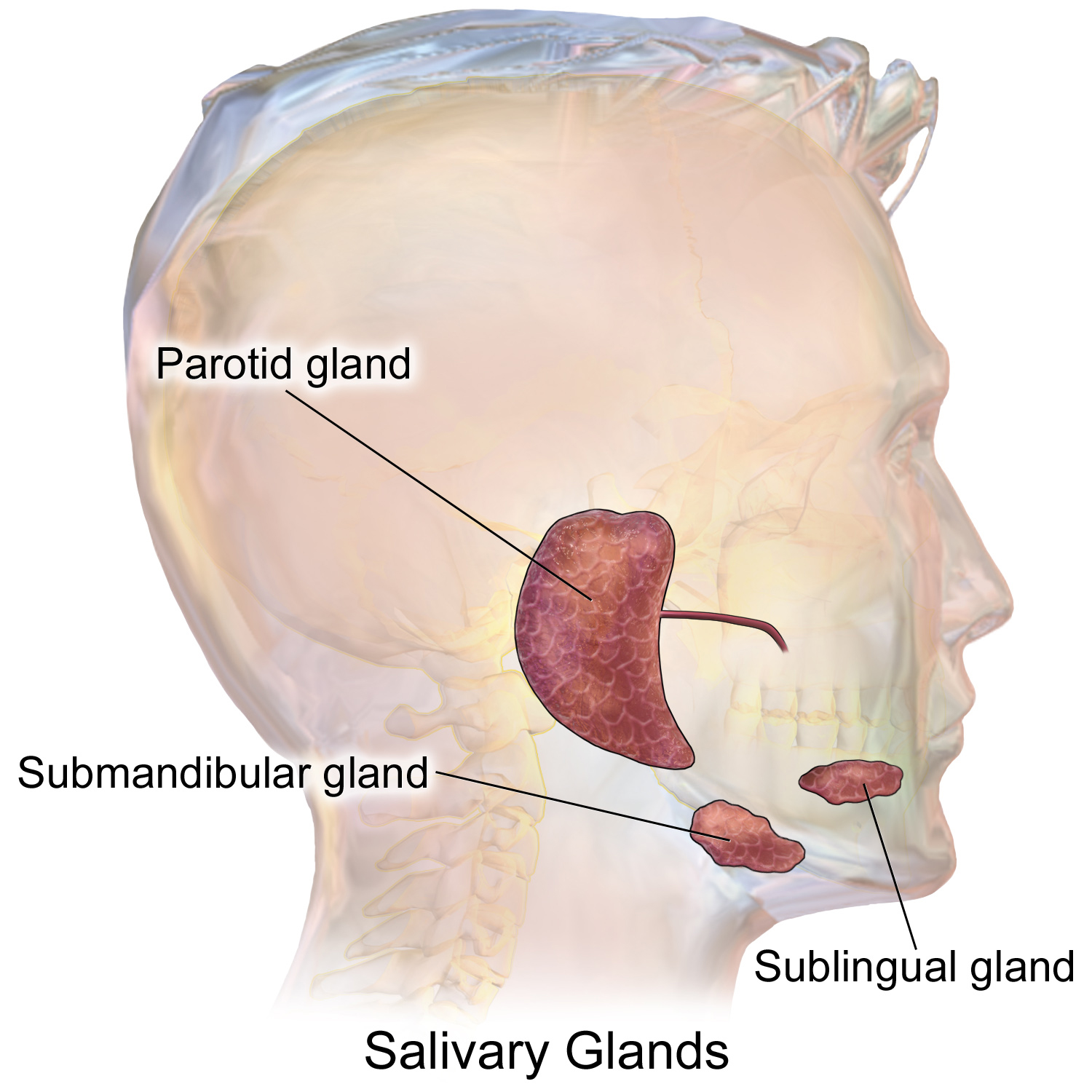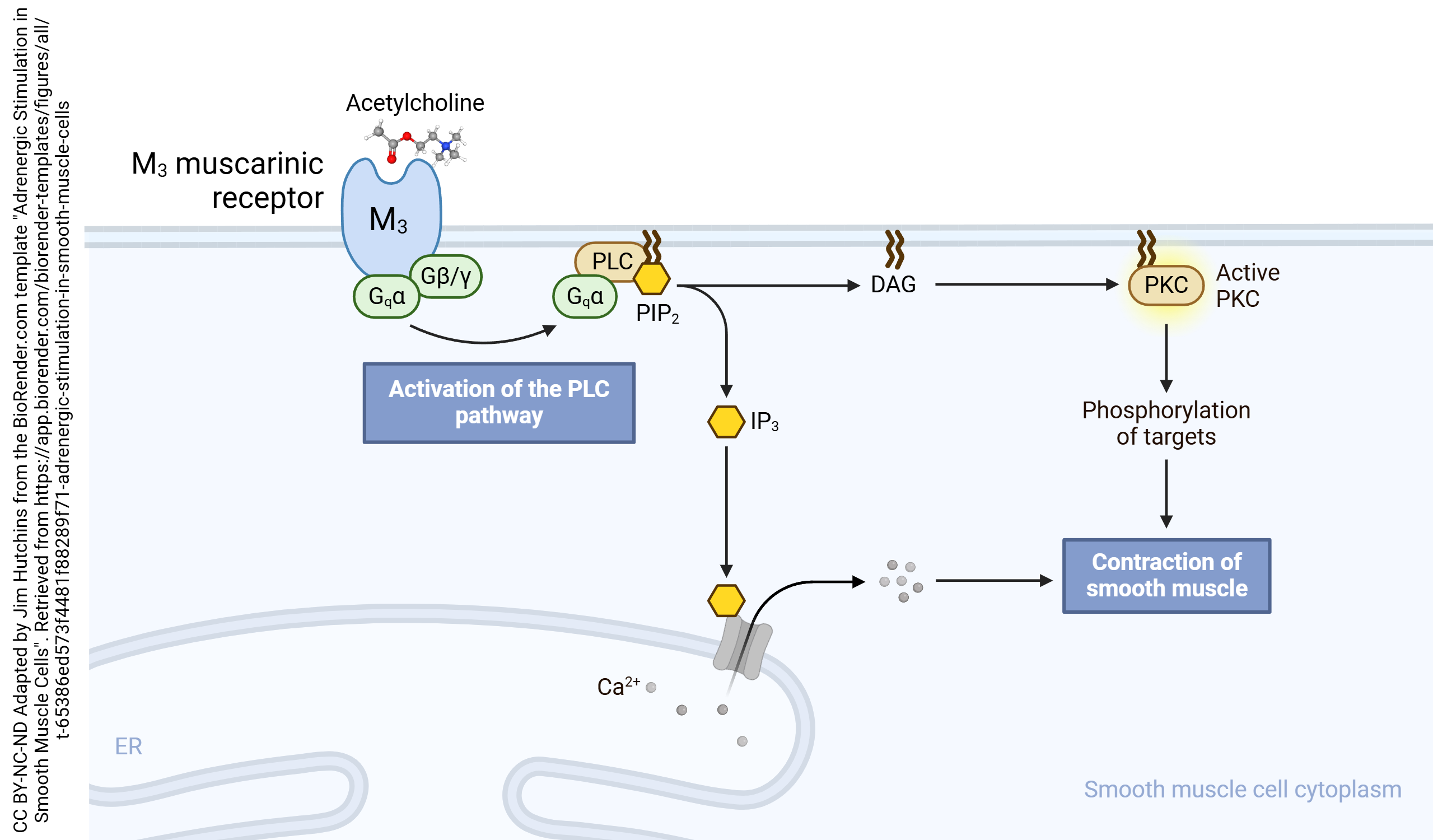Salivation
Jim Hutchins
Objective 6: Illustrate the process for making saliva (salivation).

There are three large salivary glands and up to 1000 smaller ones. The largest producers of saliva are the parotid glands, the submandibular glands, and the sublingual glands.
The salivary glands receive both sympathetic and parasympathetic input, although the effects of the parasympathetic nervous system are much stronger. Both types of innervation arrive through cranial nerve VII (the facial nerve) and cranial nerve IX (the glossopharyngeal nerve). Cranial nerve VII innervates the sublingual and submandibular glands, while cranial nerve IX innervates the parotid gland.
Cell bodies of preganglionic parasympathetic neurons are found in the superior salivatory nucleus (cranial nerve VII) or inferior salivatory nucleus (cranial nerve IX). They send axons to the intramural ganglia.
These cells synapse onto postganglionic parasympathetic neurons in the submandibular ganglion (cranial nerve VII) whose axons form the lingual nerve, innervating the sublingual and submandibular glands. Those from cranial nerve IX synapse onto postganglionic neurons that reside in the otic ganglion and whose axons make up part of the auriculotemporal nerve, innervating the parotid gland.

Release of acetylcholine from postganglionic parasympathetic nerves stimulates M3 muscarinic receptors in the glands. This, in turn, activates protein kinase C in the glandular cells, which ultimately releases calcium from intracellular stores and leads to production and release of saliva.
The peptide neurotransmitter substance P is also involved. Substance P increases the production and release of the enzyme amylase in saliva. Amylase is an enzyme that breaks down starch into simple sugars and helps begin the process of digestion.
The sympathetic innervation comes from preganglionic cell bodies in the upper thoracic levels of spinal cord sending a short axon to end in on synapses onto postganglionic cell bodies in the superior cervical ganglion. The axons travel with blood vessels up to the face, where they release norepinephrine to act on adrenergic receptors in the glands. The effects of sympathetic nervous system activation are shorter in duration and weaker. Because of the role of saliva in digestion, parasympathetic innervation produces a much longer-lasting and more robust response.
Media Attributions
- Salivary Glands © BruceBlaus is licensed under a CC BY (Attribution) license
- Muscarinic M3 Stimulation in Smooth Muscle Cells © Biorender adapted by Jim Hutchins is licensed under a CC BY-NC-ND (Attribution NonCommercial NoDerivatives) license

